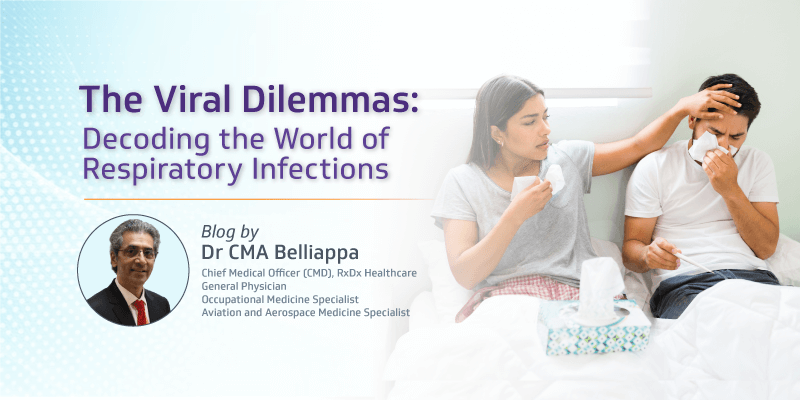The Viral Dilemmas
Post the covid pandemic, we have witnessed an onslaught of viruses over the past 4 months. The reason for this upsurge in cases is not very clear but it could be attributed to waning immunity. Additionally, our bodies were not exposed to these viruses during COVID times due to the strict social distancing and sanitary precautions that were followed stringently during those times.
Exploring the Big Four
1. Adenoviruses:
This group of viruses can affect the respiratory tract, causing conditions such as pneumonia. They can also impact the gastrointestinal tract and even affect the eyes. Thankfully, most adenovirus infections are self-limiting. The treatment for most of these viral infections is generally supportive. In some cases, infections may flare up, especially in immunocompromised individuals, and hospitalization may be necessary.
2. Respiratory Syncytial virus:
It is known to cause seasonal outbreaks, with a preponderance during the rainy season and winter in the southern hemisphere. It can affect any age group, but it is more common in children. The most common modality of presentation is respiratory illness. Younger children less than 6 months of age can get severely affected. These set of viruses commonly causes bronchiolitis, a modality that affects the bronchioles — small branching tubes carrying air in and out of the lungs.
3. Covid latest variant:
A highly mutated variant known as PIROLA has emerged as a concerning strain and is currently the dominant COVID-19 variant. Common symptoms associated with this variant include sneezing, a runny nose, headache, sore throat, and fatigue. Treatment approaches primarily focus on managing symptoms, with hospitalization necessary for individuals requiring respiratory support.
4. Flu like illnesses:
These viruses are annual seasonal infections that typically present with common cold symptoms. However, in some cases, H1N1 can pose a more serious health risk.
Do’s And Dont’s
Since all of the above viruses predominantly affect the respiratory system, the guidelines for prevention are similar. It’s important to avoid close contact with individuals who have the illness. Wearing a mask can help prevent the spread of the disease through coughing or sneezing. Additionally, refrain from touching your face, nose, and eyes to reduce the risk of infection transmission. Regularly sanitize your hands and surfaces to maintain cleanliness. These simple precautions can significantly contribute to the prevention of disease spread. If you experience symptoms, visit your doctor promptly, as early initiation of antiviral treatment can lead to quicker recovery. Consider getting an annual flu vaccine to reduce the severity of illness.


